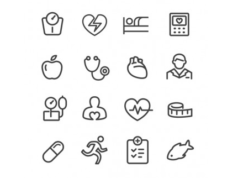
New guidance regarding the selection and evaluation of wearable devices for use in regulatory trials and to support labelling claims has been published in the journal Value of Health. The report, Selection of and Evidentiary Considerations for Wearable Devices and Their Measurements for Use in Regulatory Decision Making: Recommendations from the ePRO Consortium, was published in the June 2018 issue of Value in Health.
The consortium members determined that the identification of a device appropriate for use in a clinical trial or drug development program requires the consideration of three factors:
- Is the wearable device or sensor safe to use?
- Are the device and vendor suitable for the trial objectives and patient population studied?
- Is there satisfactory evidence of data validity and reliability to confirm that the device provides the required level of measurement accuracy and precision in measuring the concept of interest?
These three factors, and the recommendations that flow from them as detailed in the report, are based on the current literature, the regulatory guidance available to date, and the expert consensus of member representatives of the Electronic Patient-Reported Outcome (ePRO) Consortium, a technology industry research group.
“Although there remains a lack of specific guidance from regulatory bodies on the use of wearables in clinical trial programs, we believe this work provides a robust framework for the adoption of wearables in regulatory trials,” said lead author Bill Byrom, ICON Clinical Research, Marlow, United Kingdom. “Although including wearable devices in clinical trial protocols may require some additional evidence gathering or generation, we believe the reward for this effort will be substantial.”








